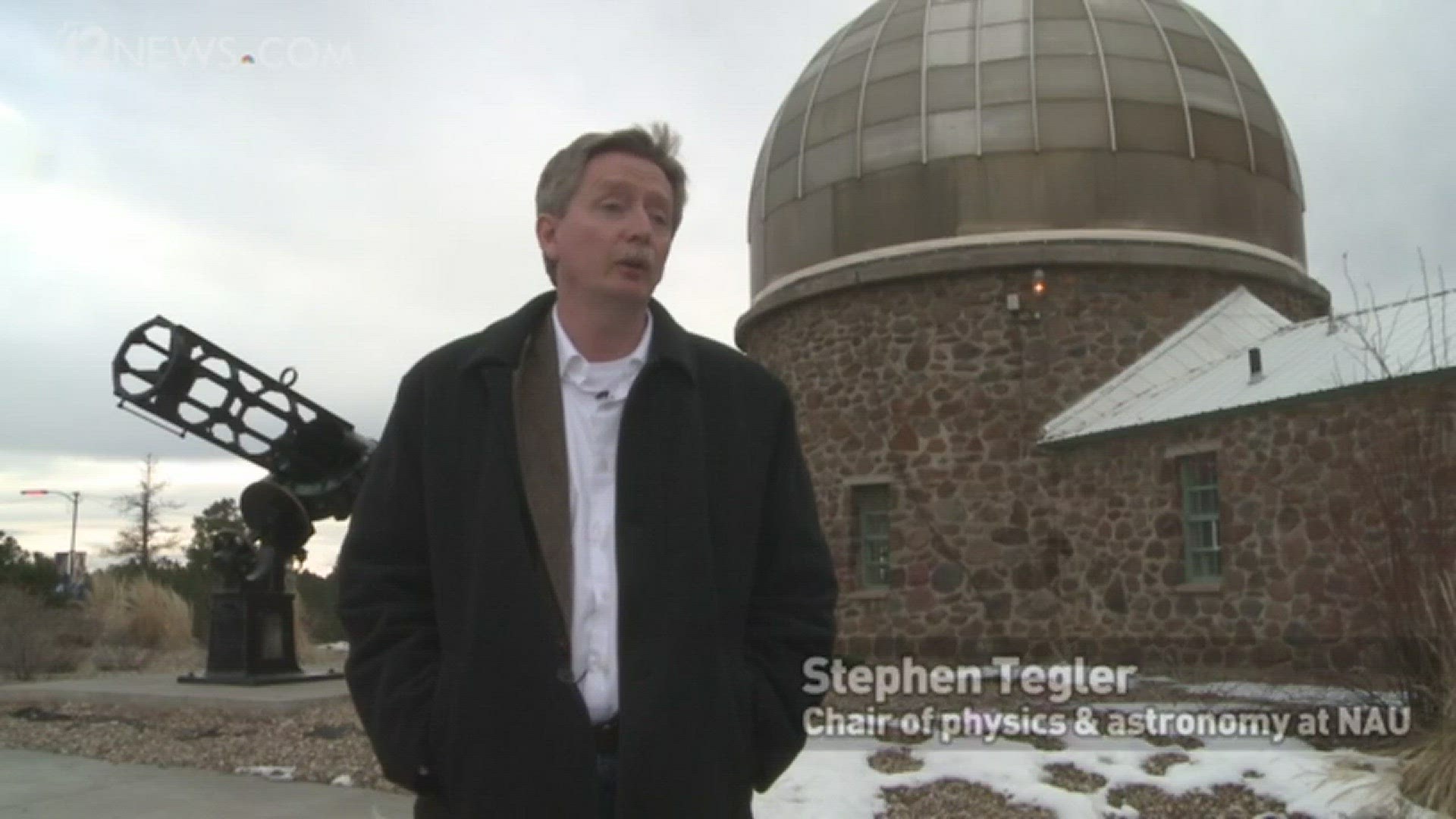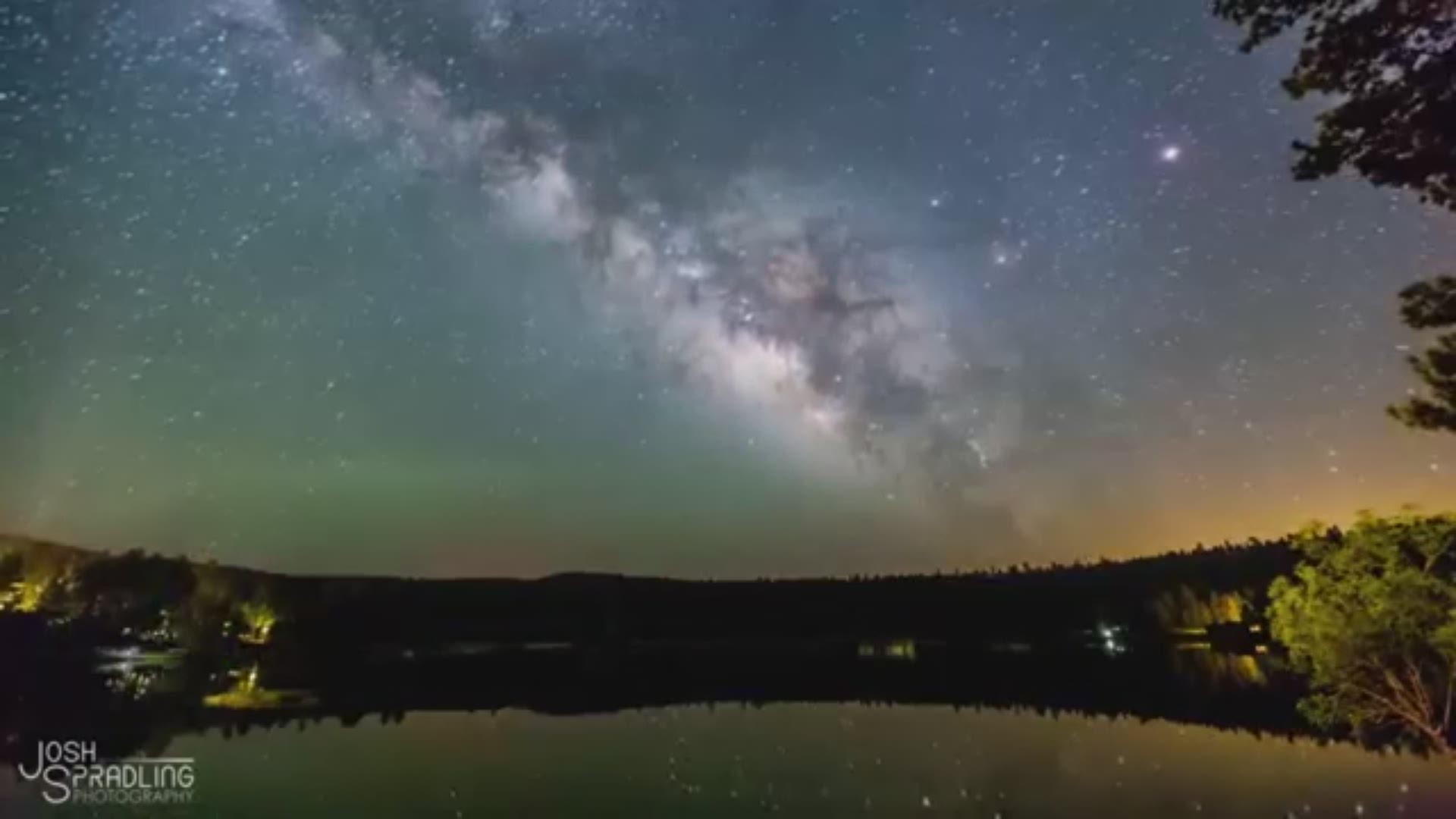If you happen to look up at the night sky from where you are, chances are you won’t be able to see many stars -- that is, unless you live in northern Arizona.
Arizona has a number of places where you can get a good view of the stars. The darkest places in the U.S., according to the National Park Service, are in the Colorado Plateau, which covers parts of Arizona, Utah, Colorado and New Mexico.
“Here in northern Arizona, in fact in the Southwest, we’re really very fortunate to be able to see the Milky Way and many dark-sky features,” said Stephen Tegler, professor and chair of the physics and astronomy department at Northern Arizona University.
According to a study in the Journal of Science Advances, most people in the U.S. can’t see the Milky Way.
Efforts have also sprung up around the world to protect the natural night sky from light pollution. Flagstaff, home to Lowell Observatory, a U.S. Naval Observatory station and NAU’s Barry Lutz Telescope, has long been a leader in these efforts.
“From a scientist’s point of view, it’s very, very important to have dark skies because what that allows us to do is see farther and farther into the universe – see fainter and fainter objects,” Tegler said.
It’s not just astronomers advocating for a darker sky.
“One of the most spectacular environments here was the night sky,” said Lance Diskan, a Flagstaff resident and founding member of the Flagstaff Dark Skies Coalition. “People don’t always recognize it an ecosystem of its own, but it’s a very special place. It has infinite resources and needs protection.”
Proponents of dark-sky ordinances say cutting down on light pollution can improve health, help wildlife, cut energy costs and even increase safety.
The International Dark-Sky Association, a nonprofit based in Tucson, is dedicated to preserving natural night skies. The organization offers dark-sky designations to communities and parks that protect the darkness from artificial light. There are a total of 14 certified IDA Dark-Sky Communities across the globe.
Arizona has the densest grouping of dark-sky communities in the world, according to the IDA: Flagstaff, Oak Creek and Sedona.
"These days, it's called the dark-sky oasis," Diskan said of Flagstaff. "And we hope to make as much as is voluntarily possible of the Colorado Plateau a dark-sky oasis for the future of Americans and the rest of humanity."
The cities were able to earn these dark-sky designations as a result of comprehensive outdoor lighting ordinances.
“It goes back at least half a century in Flagstaff,” said Diskan “Flagstaff was the first jurisdiction on Earth to enact a light-pollution-control ordinance.”
Jeff Hall, director of Lowell Observatory, said the ordinances control lighting through the amount of light, the direction it goes and the spectrum of light used.
“We’re not opposed to outdoor light at night,” he said. “We just want to manage it in a way that serves all of the needs of people who need light at night and preserves the beautiful night skies for multiple interests.”
Flagstaff's lighting code sets limits of light output, measuring in units of lumens per acre. Outdoor lights are not allowed to exceed a certain amount of lumens per acre, depending on where they are or the type of light fixture.
All of the outdoor lights must also be shielded, directing light down to the ground without wasting any light in the sky. This cuts down on skyglow, the brightness of the night sky in a certain area as a result of light pollution.
The type of light used also matters. The lighting code specifies that yellow light sources are preferred to white lights because they result in less skyglow and are easier on the eyes at night.
PHOTOS: Flagstaff at night
“Our motto in Flagstaff -- of our coalition -- is not, ‘Turn out all the lights.’ It’s, ‘Have the right light at the right place at the right time,'" said Diskan.
The efforts to preserve the darkness have brought people from around the world to Arizona to see the stars. Astro-tourists flock to the state for star parties, tours and special viewing nights at observatories.
According to the Flagstaff Convention and Visitors Bureau, the most popular activity for tourists interested in art, culture, science and history is to visit Lowell Observatory.
Diskan said he often sees people get off the train that runs through the city and look with awe at Flagstaff’s night sky.
“As long as we keep doing the right things and leading the way with Flagstaff, people will continue to come here,” Diskan said. “And indeed, more and more people are coming here.”


